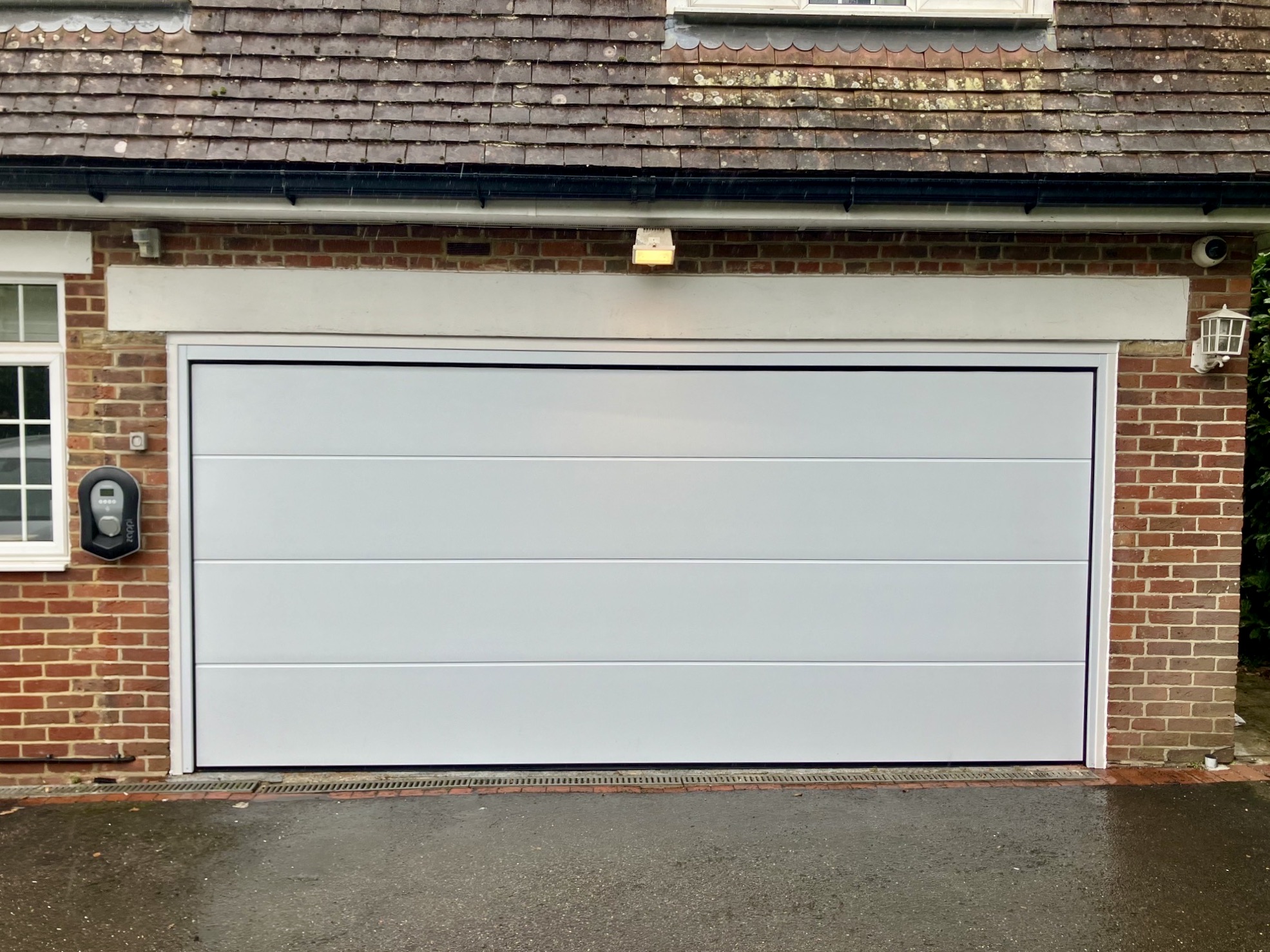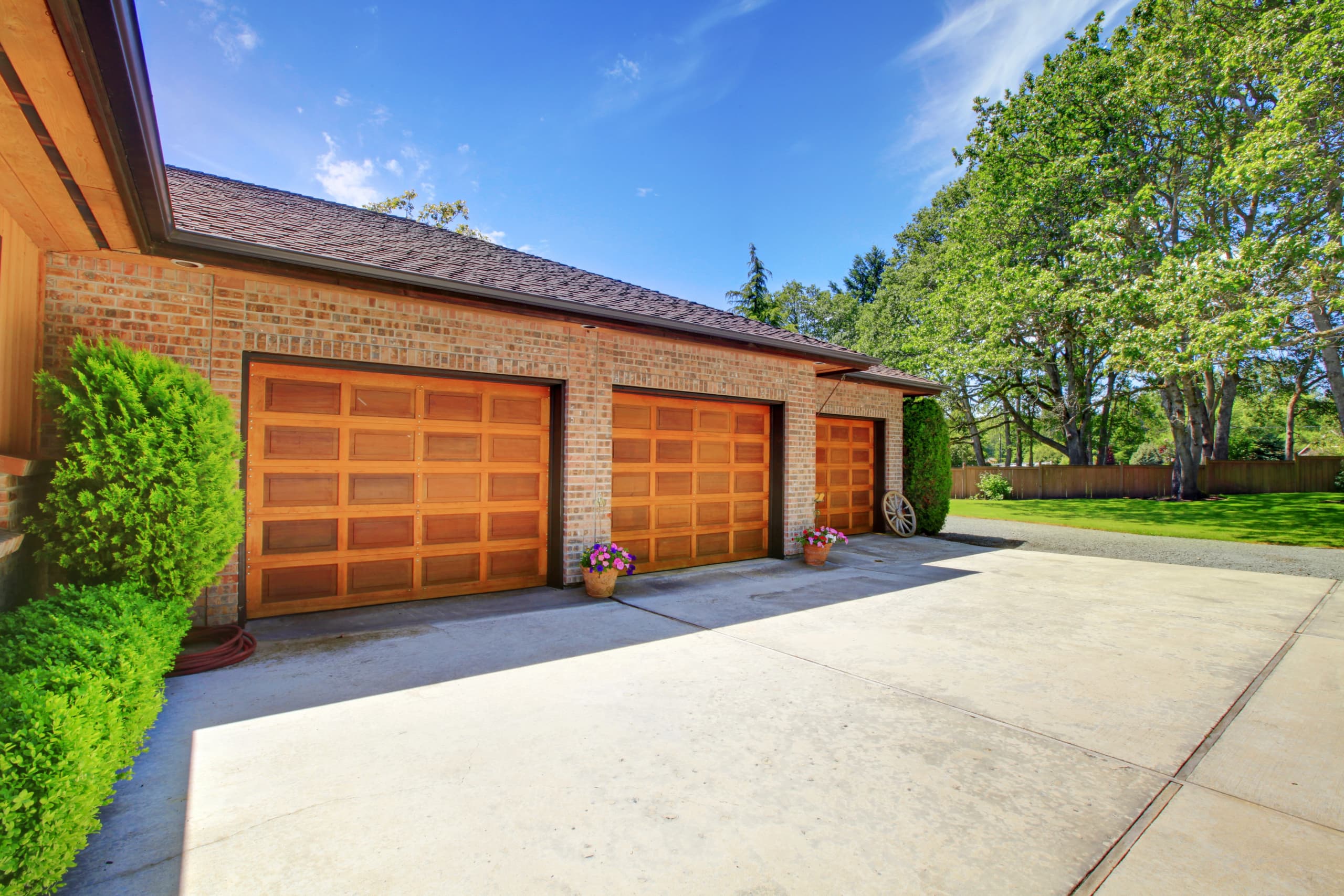The Complete Guide to Garage Door Sizing

Choosing the right garage door size is an important decision that affects both the functionality of your garage and your home’s overall aesthetic appeal. A properly sized garage door ensures easy access when you’re in your car while still maximising available surrounding space, and it can significantly impact your property’s value.
Whether you’re building a new garage or replacing an existing door, understanding proper sizing requirements and the options when it comes to garage door sizes will help you make an informed decision.
Types of Garage Door
Garage door sizes vary depending on the style of door you choose.
Up and Over Doors
Standard up and over doors refer to the dimensions inside the fixing sub frame – this is either made of timber or steel. A door listed as 7’0” by 6’6”, for example, is made to fit a sub frame with an opening of the same size. There will be a certain amount of tolerance factored into the garage door panel itself, and this will differ depending on the manufacturer and the material of the door.
Roller Garage Doors
There are two main types of roller door – steel, single skin curtain doors and double skinned aluminium curtains which are insulated with a foam core. If you’re ordering a single skin door, the width is the opening size between the side guide plus the amount of roll curtain overlap (typically 25mm per side on single doors or 50mm per side on double doors).
For aluminium roller doors, the width is usually inclusive of the side guides, which come in different dimensions. The ordering height is the measurement to the top of the side channels plus the curtain roll added as an extra measurement.
Sectional Garage Doors
Sectional garage doors are sized based on the internal sub-frame opening dimensions, with additional allowances needed for side frame legs and headroom needed for installation. Measurements also depend on whether the door is installed behind or between the structural opening, and tolerances may vary depending on factors like the squareness of the opening or its material (e.g., rough stone, brick).
It’s crucial to account for the steel frame legs and headroom in all your calculations. Sectional doors are often measured incorrectly due to the variety of headroom options, track projections into the garage, and lifting spring placements, so it’s worth having a professional measure it for you for the right fit.
Side Hinged Garage Doors
Much like up and over doors, side hinged doors are measured based on the internal sub-frame dimensions. Certain manufacturers, like Carteck’s insulated side hinged doors, have a factory fitted sub frame so they’re always ordered as overall frame dimensions.
Bespoke Doors
Not every garage is alike, so we offer bespoke doors for homes with unique sizes. Our fitters can carry out an assessment of your garage to provide a tailored quote and provide advice on the best style of door for your home.
Single vs. Double Garage Doors
When deciding between single and double garage doors, there are several factors to consider. Single doors offer greater structural integrity and typically cost less to replace or repair since they use smaller, more manageable panels and lighter springs. They also provide better insulation and can be operated manually more easily during power outages.
Double doors, while providing a wider entrance and potentially more appealing aesthetic, may require more substantial structural support and could incur higher maintenance and replacement costs. However, they offer superior convenience for multi-car households and can make manoeuvring larger vehicles significantly easier.
Vehicle Dimensions and Clearance Requirements
If you’re building a new garage, understanding your vehicle’s dimensions is essential for proper sizing. Modern cars typically range from 6 to 6.5 feet in width, while SUVs and vans can exceed 7 feet including mirrors. Beyond the basic width requirements, you’ll need to account for additional clearance space for comfortably getting in and out. A good rule of thumb is to add at least 2-3 feet of extra width beyond your vehicle’s dimensions to allow for comfortable door opening and routine maintenance access.
Selecting the right garage door size requires careful consideration of multiple factors, from your vehicle’s dimensions to any additional space requirements you might have and local building regulations. Taking accurate measurements and planning for both current and future needs will help ensure your garage door choice serves you well over time. We recommend booking a free site survey – a member of our team will accurately measure your garage door for the perfect fit.
To book a free site survey or for a quote for a new garage door, get in touch with the team at Wessex Garage Doors today.

